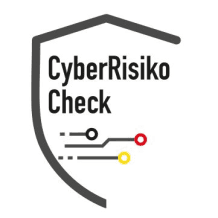Code Injection: A Critical Security Vulnerability
Code Injection refers to a type of vulnerability where an attacker injects malicious code into a program or application. This security flaw allows the attacker to manipulate the target system according to their desires and potentially take control of it.
How Does Code Injection Work?
In a code injection, an attacker exploits vulnerabilities in the program code to insert commands. This often occurs through user input that is not properly validated. For example, an online form that is implemented without sufficient input control can provide an entry point.
An attacker can use special characters or constructs in input fields, which are then interpreted by the application as external code instructions. In this way, malicious code is integrated and executed.
Types of Code Injection
SQL Injection
This form of code injection targets the database level. An attacker executes SQL commands by injecting manipulated inputs into SQL statements. This can lead to unauthorized queries, modification operations, or even data loss.
Command Injection
In this variant, system commands are executed on the server. An attacker can alter program execution or execute system commands by injecting them into the inputs.
Script Injection
Essentially, this involves injecting scripts (like JavaScript) into a webpage or application. These scripts can trigger Cross-Site Scripting (XSS) attacks or prevent the browser's resources from functioning correctly.
Risk Factors of Code Injection
Code injection can have serious consequences for businesses and individuals. The greatest risks include:
Unauthorized access to sensitive data
Data loss or modification
Full control over the compromised application
Identity theft and spreading of malware
Protective Measures Against Code Injection
Input Validation and Sanitization
One of the most effective approaches to prevent code injection is to thoroughly validate and sanitize all user inputs. This can be achieved through filter systems that identify and neutralize unwanted constructs.
Prepared Statements and Parameterized Queries
Especially in the case of SQL injections, prepared statements that do not require dynamic string concatenation offer a high degree of security. The principle of parameterized queries prevents user inputs from being directly incorporated into SQL statements.
Least Privilege Principle
Assign only the necessary rights to system components. Even if an attacker succeeds in injecting code, the impacts are minimized by restricted access rights.
Regular Security Updates
Continuous updates and patches of the software prevent exploitation of known vulnerabilities. This applies not only to in-house developed software but also to third-party software.
Code Sandboxing and Web Application Firewalls (WAF)
By utilizing these technologies, code is executed in an isolated environment, and firewalls monitor traffic for suspicious activities. They provide valuable layers of security against potential code injection attacks.
Conclusion
Code injection is one of the most common and dangerous security problems in software development. Companies should regularly test their systems and consistently implement the protective measures mentioned to prevent code injection attacks and ensure the security of their systems.
📌 Related Terms: SQL Injection, Command Injection, Cross-Site Scripting (XSS)
Code Injection in Germany: Current Developments
The significance of code injection in Germany is continuously growing. According to recent studies by the Federal Office for Information Security (BSI), German companies are increasingly affected by cyber threats. The Bitkom association reports that 84% of German companies have been victims of cyberattacks in the past two years.
Particularly in the area of code injection, the following trends are evident:
Increasing investments in preventive security measures
Increased awareness of holistic security concepts
Integration of code injection into existing compliance frameworks
EU Compliance and Code Injection
With the introduction of the NIS2 Directive and tightened GDPR requirements, German companies must adjust their security strategies. Code injection plays a central role in meeting regulatory requirements.
Important compliance aspects:
Documentation of security measures
Regular review and updates
Proving effectiveness to regulatory authorities
Practical Implementation in Corporate Daily Life
The integration of code injection into daily corporate life requires a structured approach. Experience shows that companies benefit from a gradual implementation that takes into account both technical and organizational aspects.
Think of code injection as an insurance policy for your company: The better prepared you are, the lower the risk of damages from security incidents.
Further Security Measures
For a comprehensive security strategy, you should combine code injection with other security measures:
Vulnerability Management - Systematic vulnerability management
Penetration Testing - Comprehensive security testing
Security Hardening - Employee awareness training
Incident Response Plan - Preparation for security incidents
Conclusion and Next Steps
Code injection is an essential component of modern cybersecurity. Investing in professional code injection measures pays off in the long term through increased security and compliance adherence.
Do you want to optimize your security strategy? Our experts are happy to assist you in implementing code injection and other security measures. Contact us for a non-binding initial consultation.
🔒 Act now: Have your current security situation assessed by our experts
📞 Request a Consultation: Schedule a free initial consultation on code injection
📋 Compliance Check: Review your current compliance situation
📌 Related Topics: Cybersecurity, IT Security, Compliance Management, Risk Assessment
Best Practices for Code Injection
The successful implementation of code injection requires a systematic approach. Based on our many years of experience in cybersecurity consulting, the following best practices have proven effective:
Strategic Planning
A well-thought-out strategy is the foundation for successful code injection. You should consider the following aspects:
Define clear objectives and success metrics
Involve stakeholders early and define responsibilities
Calculate realistic timelines and budgets
Conduct risk assessment and contingency planning
Technical Implementation
The technical implementation of code injection should proceed in stages:
Analysis of Current Situation: Assessment of existing security measures
Gap Analysis: Identification of improvement potentials
Pilot Project: Test run in a limited area
Rollout: Gradual expansion to the entire company
Monitoring: Continuous monitoring and optimization
Common Challenges and Solutions
Similar challenges frequently arise during the implementation of code injection. Here are proven approaches to solutions:
Resistance to Change
Employees are often skeptical of new security measures. Successful change management strategies include:
Transparent communication about benefits and necessity
Training and continuing education measures
Involvement of opinion leaders as multipliers
Gradual introduction with quick wins
Budget Constraints
Limited resources require a prioritized approach:
ROI calculation for different measures
Phased implementation based on priorities
Utilization of synergies with existing systems
Consideration of compliance requirements
Success Measurement and KPIs
The success of code injection measures should be measurable. Relevant metrics include:
Quantitative Metrics
Number of identified and resolved vulnerabilities
Reduction of average response time to security incidents
Improvement in compliance ratings
ROI of implemented security measures
Qualitative Assessments
Employee satisfaction and acceptance
Feedback from customers and partners
Evaluation by external auditors
Reputation and trust in the market
Future Trends and Developments
The landscape of cybersecurity is continuously evolving. Current trends influencing code injection include:
Artificial Intelligence: AI-driven threat detection and response
Zero Trust Architecture: Trust is not assumed, but continuously verified
Cloud Security: Adaptation to hybrid and multi-cloud environments
IoT Security: Protection of connected devices and systems
Quantum Computing: Preparation for post-quantum cryptography methods
Companies that invest in code injection today are positioning themselves well for future challenges and opportunities.
Your Next Step
The implementation of code injection is an investment in the future of your company. Our experts support you in developing a customized solution that meets your specific requirements.
Start today:
📞 Free Consultation: Schedule a non-binding conversation
📋 Security Assessment: Have your current security situation evaluated
🎯 Custom Solution: Development of a tailored code injection strategy
🚀 Implementation: Professional execution with ongoing support
Contact us today and take the first step towards a safer digital future.




